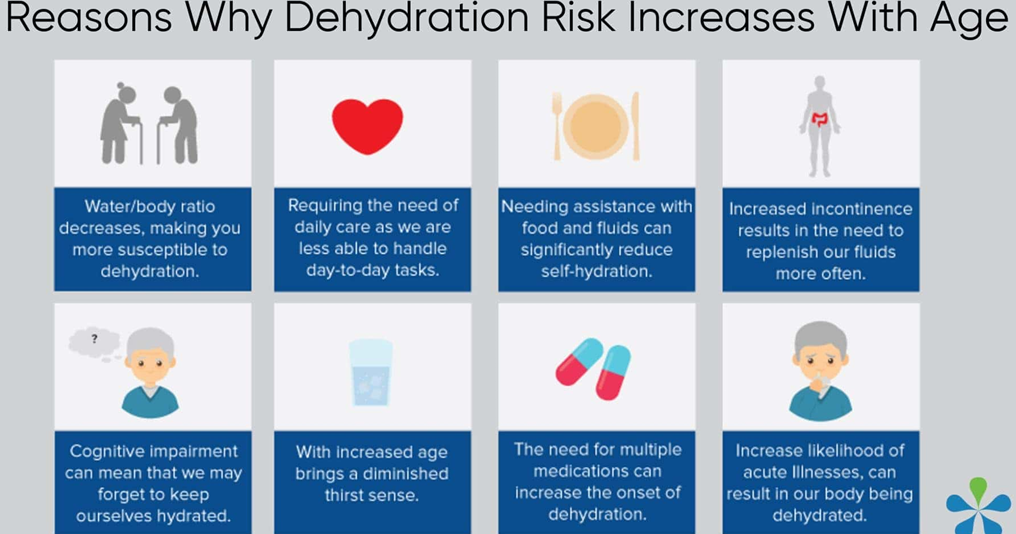Which patient is at the highest risk for dehydration?
Elderly patient with fever and nausea and vomiting
Teenager who has intentionally limited fluid intake to avoid weight gain
Young patient with diarrhea
Infant who has a fever
The Correct Answer is A
Choice A: Elderly patients are at a higher risk for dehydration due to physiological changes that come with aging, such as decreased kidney function and physical changes to the body's water balance systems. Additionally, fever increases metabolic rate and fluid loss, and nausea and vomiting prevent adequate fluid intake, further increasing the risk of dehydration.
Choice B: While intentionally limiting fluid intake can lead to dehydration, the body's thirst mechanism in a healthy teenager is typically strong enough to prevent severe dehydration.
Choice C: Diarrhea can certainly lead to dehydration, but a young, otherwise healthy patient typically has a stronger ability to recover from fluid loss than an elderly patient.
Choice D: Infants are at a higher risk for dehydration than older children and adults due to their smaller body weight and higher turnover of water and electrolytes, but in this case, the elderly patient's multiple risk factors put them at a higher risk overall.

Nursing Test Bank
Naxlex Comprehensive Predictor Exams
Related Questions
Correct Answer is C
Explanation
Choice A reason: This is incorrect because this represents respiratory alkalosis, not acidosis. Respiratory alkalosis is characterized by a high pH and a low PCO2.
Choice B reason: This is incorrect because this represents a mixed disorder, not a pure respiratory acidosis. A mixed disorder occurs when both the pH and the PCO2 are abnormal, but in opposite directions.
Choice C reason: This is correct because this represents respiratory acidosis. Respiratory acidosis is characterized by a low pH and a high PCO2.
Choice D reason: This is incorrect because this represents normal values, not respiratory acidosis. Normal values for pH and PCO2 are 7.35 to 7.45 and 35 to 45 mmHg, respectively.
Correct Answer is C
Explanation
Choice A reason: This is incorrect because diffusion is the movement of solutes (dissolved substances) from an area of higher concentration to an area of lower concentration, until equilibrium is reached.
Choice B reason: This is incorrect because hydrostatic pressure is the force exerted by a fluid against a wall or a membrane. Hydrostatic pressure can drive the movement of fluid and solutes across a membrane, but it is not the movement itself.
Choice C reason: This is correct because osmosis is the movement of a pure solvent (liquid) across a semipermeable membrane from an area of lower solute concentration to an area of higher solute concentration, until equilibrium is reached.
Choice D reason: This is incorrect because ATP is not a movement, but a molecule. ATP stands for adenosine triphosphate, which is the main source of energy for cellular processes. ATP can provide energy for some types of transport across membranes, such as active transport.
Whether you are a student looking to ace your exams or a practicing nurse seeking to enhance your expertise , our nursing education contents will empower you with the confidence and competence to make a difference in the lives of patients and become a respected leader in the healthcare field.
Visit Naxlex, invest in your future and unlock endless possibilities with our unparalleled nursing education contents today
Report Wrong Answer on the Current Question
Do you disagree with the answer? If yes, what is your expected answer? Explain.
Kindly be descriptive with the issue you are facing.
